RARE! WWII 1944 EINDHOVEN Mission Marked Operation Market Garden Air Navigation Map (LARGE SIZE)




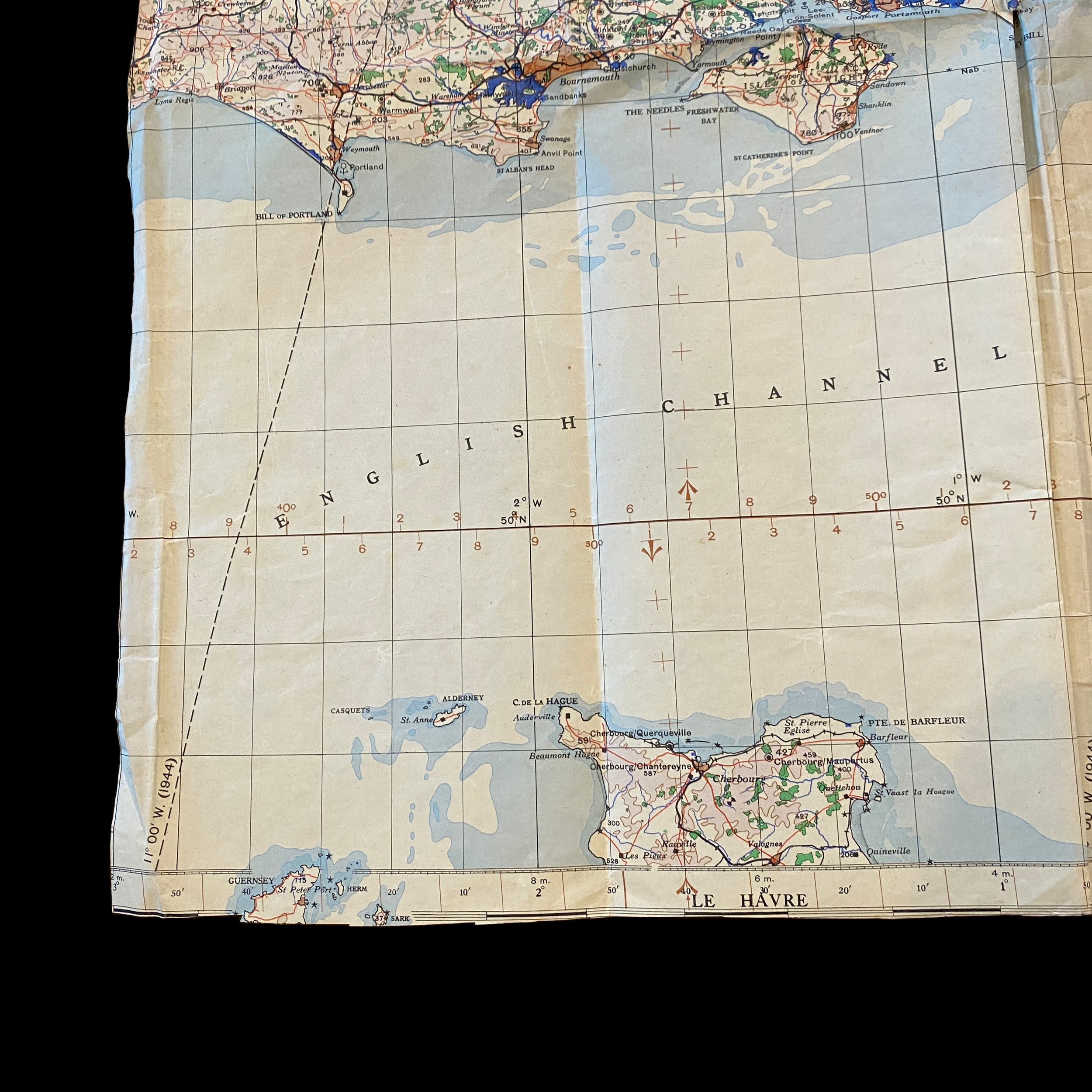



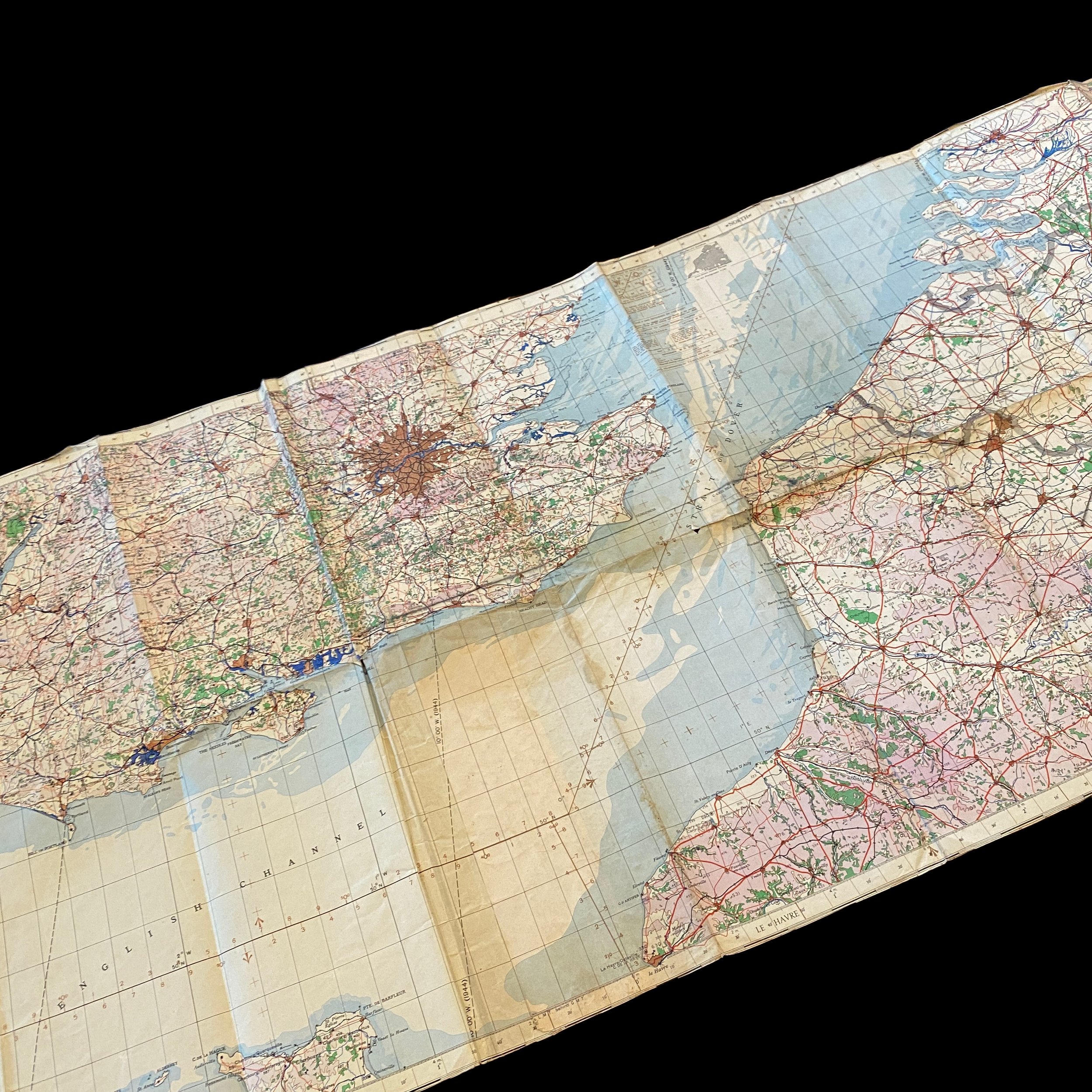


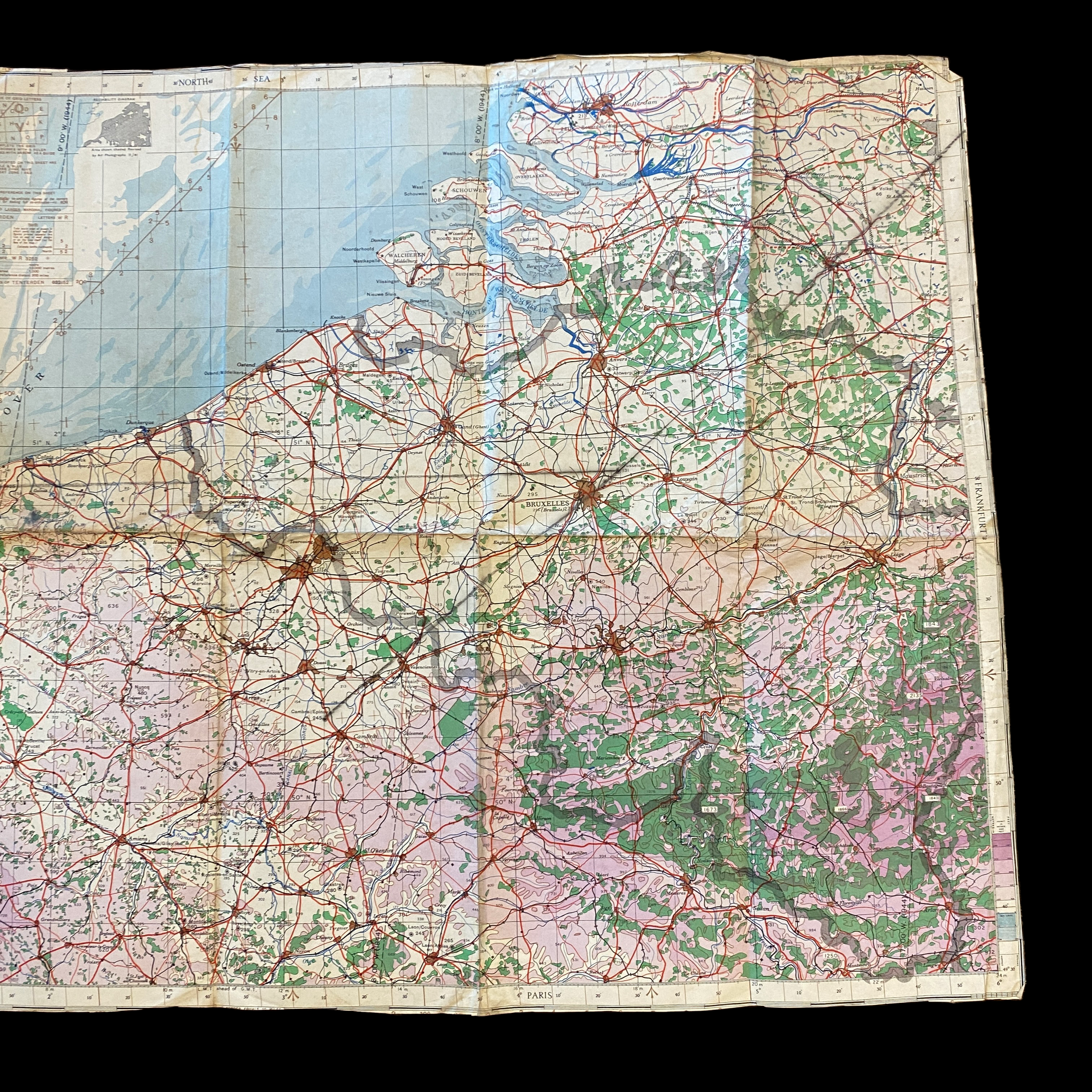
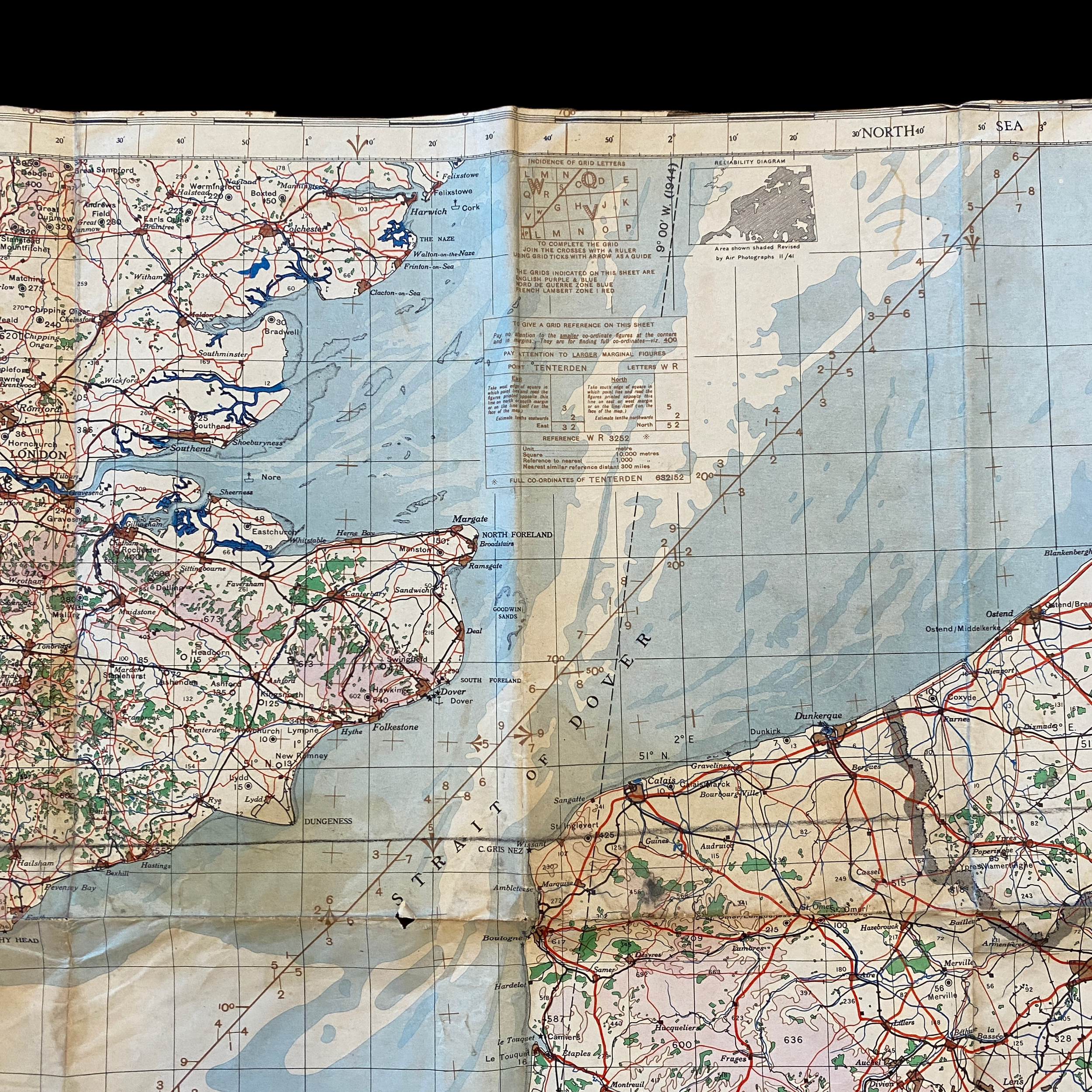
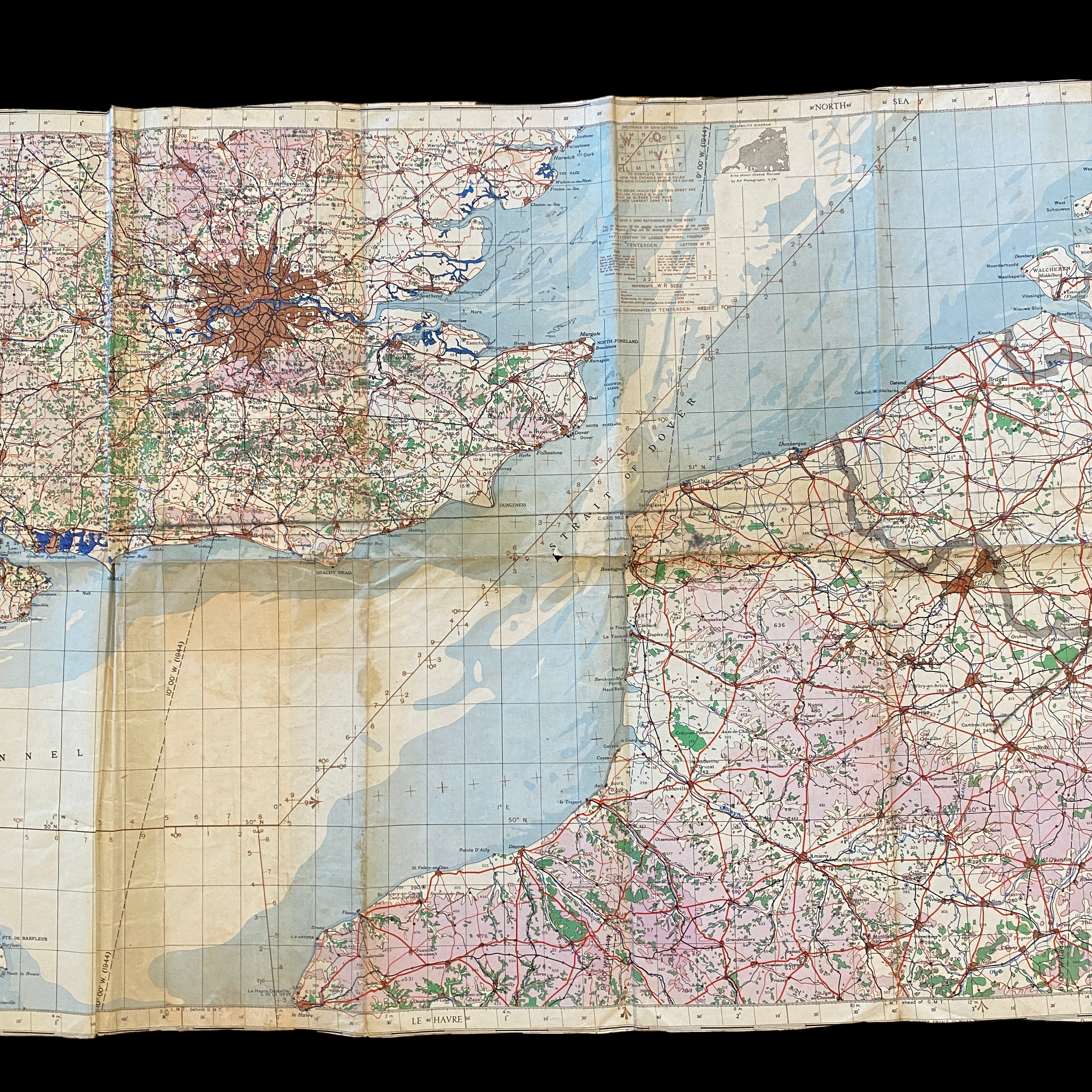


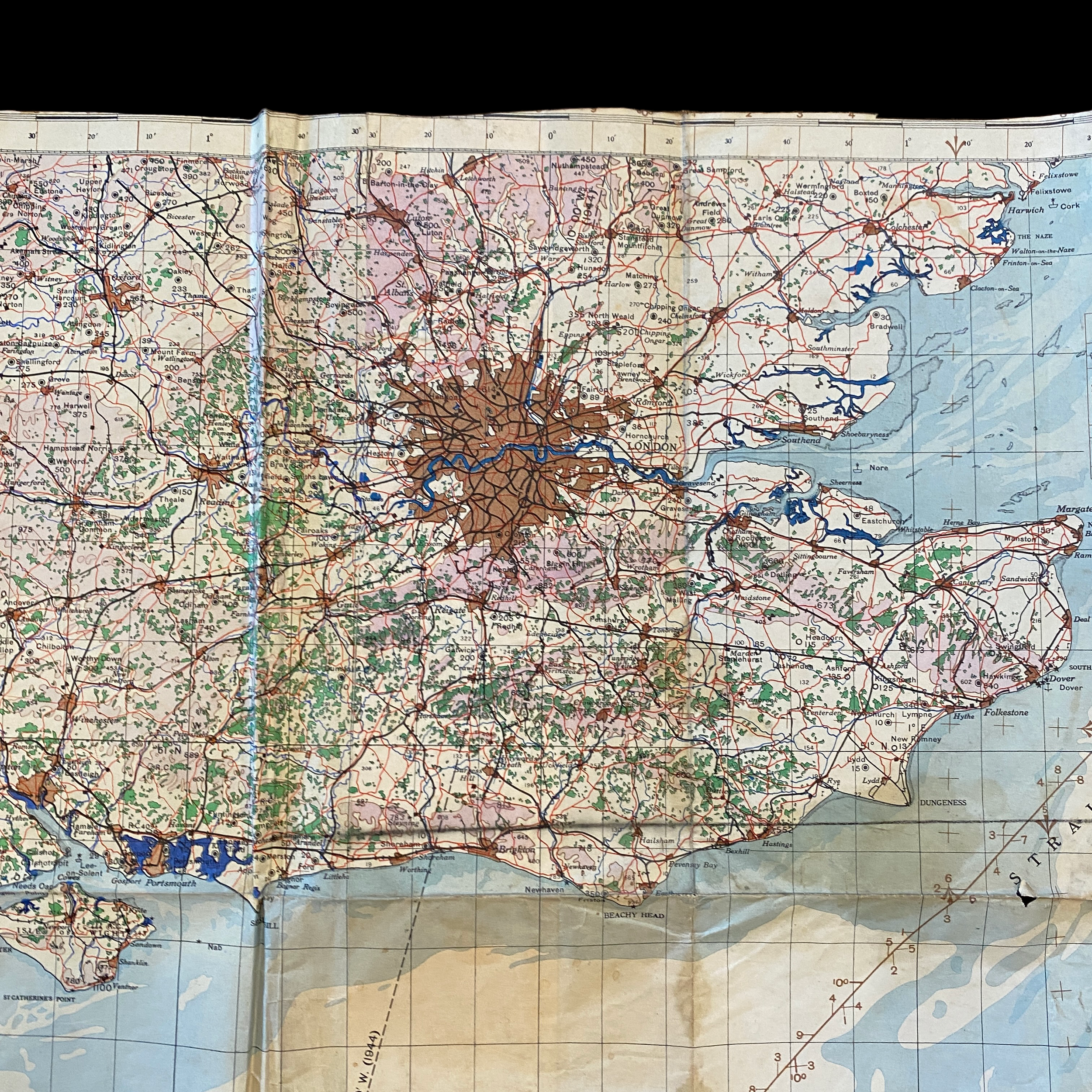
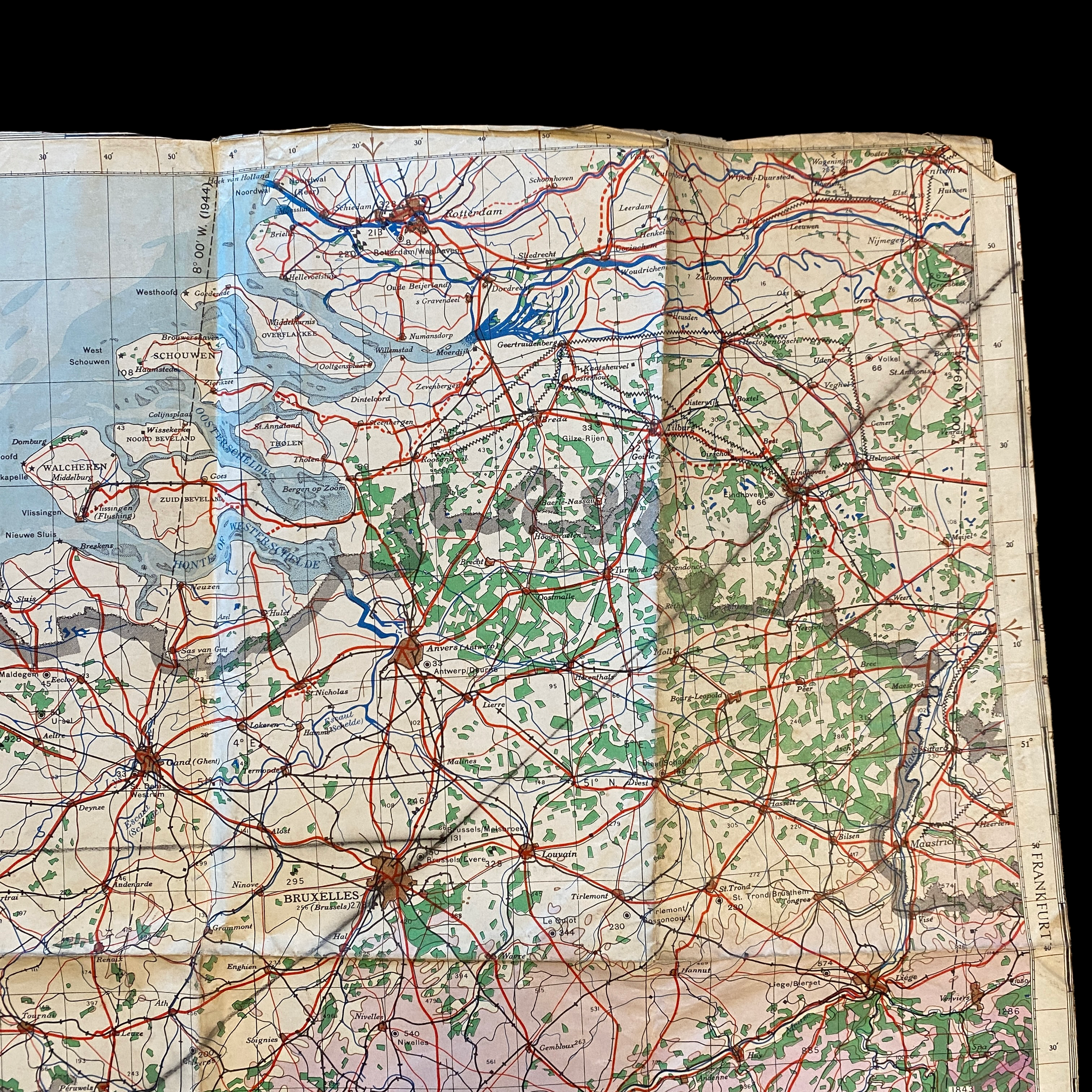


















RARE! WWII 1944 EINDHOVEN Mission Marked Operation Market Garden Air Navigation Map (LARGE SIZE)
Comes with hand-signed C.O.A.
This incredible and museum-grade WWII map dated 1944 shows heavy wear and mission use with operations flight lines over EINDHOVEN. This very large map is also rare because it is two maps adhered together (side by side) by the navigators to show a longer and wider view of that specific area in the European Theater. What makes this map extremely rare is that is shows all of the Operation Market Garden airborne and glider drop zones. This map shows the 1st British Airborne DROP ZONE of Arnhem, the 82nd Airborne Division (US) DROP ZONE of Nijmegen, and the 101st Airborne Division (US) DROP ZONE over the regions of Uden through Eindhoven.
Eindhoven is a city in the Netherlands that played a crucial role during the Operation Market Garden, a military operation conducted by the Allied forces during World War II. The operation was designed to establish a bridgehead over the Rhine River, thereby gaining access to Germany’s industrial heartland and ending the war.
In September 1944, the Allies launched the Operation Market Garden, which was a combined airborne and ground assault on several key bridges in the Netherlands, including the one in Eindhoven. The objective of the operation was to secure a pathway for the Allied ground troops, which would advance through the Netherlands to Germany. However, things did not go as planned, and the operation turned out to be a costly failure.
Eindhoven was one of the key objectives of the operation, as its strategic location and important road networks made it a crucial target for the Allies. The city was defended by the Germans, but the Allied paratroopers managed to capture the city’s airfield, which was essential for their supply line. The fighting in Eindhoven was intense, and both sides suffered heavy casualties. Despite the resistance from the German forces, the Allies managed to secure the airfield and the city.
The capture of Eindhoven was not only a military victory for the Allies, but it also had a significant impact on the city and its citizens. During the fighting, much of Eindhoven was destroyed, and many civilians lost their homes and belongings. However, the Allies also brought with them much-needed food and supplies, which helped the city to recover.
After the war, Eindhoven was rebuilt, and its citizens worked hard to restore the city to its former glory. The city’s industrial sector was revitalized, and it became a major center for electronics and technology. Today, Eindhoven is a thriving city that has grown into one of the Netherlands' most important economic centers.
In conclusion, the role of Eindhoven during Operation Market Garden was critical. The city was a key objective of the operation, and its capture was essential for the success of the Allies’ plan. The intense fighting in Eindhoven resulted in significant damage to the city and its citizens, but the Allies’ victory also brought much-needed supplies and helped the city to recover. Today, Eindhoven is a thriving city that is proud of its rich history and heritage.
In the summer of 1944, General Bernard Montgomery came up with a plan to cross the River Rhine and advance deep into northern Germany to shorten World War II.
General Montgomery named his two-part plan Operation Market Garden; Market was the airborne operation employing three divisions: the U.S. Army’s 82nd and 101st Airborne Divisions, the British 1st Airborne, and the 1st Polish Parachute Brigade. This group formed the first Allied Airborne Army, and their objective for this mission was to seize key bridges in the Netherlands after landing by parachute and glider. Once the airborne troops landed, the British XXX Corps would advance over the bridges and cross the Rhine and its tributaries (the Garden portion of the operation). The bridges were at Eindhoven (around 13 miles from the start line), Nijmegen (53 miles away), and Arnhem (62 miles away), as well as two smaller bridges at Veghel and Grave that were between Eindhoven and Nijmegen.
If successful, the plan would open a route into the German industrial heartland, the Ruhr Valley, and liberate the Netherlands- ending the war early.
The Plan:
In the summer of 1944, the Allies came up with an ambitious scheme to cross the River Rhine and advance deep into northern Germany and shorten the war.
Codenamed 'Market Garden', this plan involved the seizure of key bridges in the Netherlands by the 101st and 82nd US Airborne Divisions, and 1st British Airborne Division who would land by parachute and glider.
Then the British 30 Corps could advance over the bridges and cross the Rhine and its tributaries. The bridges were at Eindhoven, around 20 kilometres (13 miles) from the start line, Nijmegen, 85 kilometres (53 miles), and Arnhem, 100 kilometres (62 miles) away, as well as two smaller bridges at Veghel and Grave that lay between Eindhoven and Nijmegen.
If successful, the plan would liberate the Netherlands, outflank Germany’s formidable frontier defences, the Siegfried Line, and make possible an armoured drive into the Ruhr, Germany’s industrial heartland.
The Landings:
On 17 September the airborne divisions landed. Eventually all the bridges were captured in what was one of the largest airborne operations in history.
The plan failed largely because of 30 Corps’ inability to reach the furthest bridge at Arnhem before German forces overwhelmed the British defenders. Allied intelligence had failed to detect the presence of German tanks, including elements of two SS Panzer divisions.
Arnhem:
Around 10,000 men from Major-General Roy Urquhart’s 1st British Airborne Division and the 1st Polish Independent Parachute Brigade landed at Arnhem. But their landing zones were 11 kilometres (seven miles) from the bridge at Arnhem. Only one battalion reached the objective while the remaining soldiers were squeezed into a pocket at Oosterbeek to the west.
Apart from a few anti-tank guns and howitzers, modified to fit inside gliders, the lightly armed airborne troops had few heavy weapons with which to resist tanks.
30 Corps:
Although units of 30 Corps captured Nijmegen bridge in conjunction with the US 82nd Airborne Division, they could not reach the furthest bridge at Arnhem. Much of its advance was along a single narrow causeway, which was vulnerable to traffic jams and German counter-attacks.
In some places the advance was hindered by marshes that prevented off-road movement. Throughout the battle the Germans also showed a remarkable ability to put together scratch battle groups that fought to delay the armoured columns.
Problems:
Operations were also hampered by a shortage of transport aircraft. The airborne troops were flown into the Netherlands in three lifts rather than all together.
Arnhem’s wooded landscape severely restricted the range of wireless sets, so communication failures also reduced the chance of success. Thick fog in England and low clouds over the battle zone hampered both resupply and the air-lifting of reinforcements.
Evacuation:
On 24-25 September about 2,100 troops from 1st Airborne Division were ferried back across the Rhine. Another 7,500 were either dead or made prisoners of war.
The crossing of the Rhine and the capture of Germany's industrial heartland were delayed for six months. Now, the Allies would have to fight their way into the Reich on a broad front. There would be no quick victory.